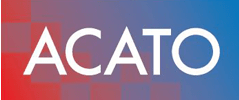Understanding the Average Cost of ISO Certification Factors

What Determines Your ISO Certification Cost: Key Factors and Typical Expenses
Estimating the average cost of ISO certification requires understanding several dynamic variables that drive initial outlay and ongoing fees. This guide maps the core cost components, illustrates how company size and standard complexity affect pricing, breaks down standard-specific ranges, examines the role of service providers, and explores regional and industry-driven variations to empower informed budgeting decisions.
What Are the Main Components of ISO Certification Cost?
ISO certification cost comprises three primary categories—implementation, certification and maintenance expenses—which together define the total investment required to demonstrate compliance, achieve certification and sustain it over time.
Before you commit resources, consider:
- Implementation Costs: Gap analysis, system design, documentation and training.
- Certification Fees: Audit days, auditor rates and accreditation levies.
- Maintenance Expenses: Annual surveillance audits and recertification cycles.
These components structure the budgeting process and prepare organizations for deeper cost drivers.
What Are Implementation Costs and What Do They Include?

Implementation costs cover initial gap assessments and system setup, ensuring processes align with ISO requirements and reducing time to certification. Typical inclusions are:
- Gap Analysis to identify compliance shortfalls.
- Documentation Development of policies and procedures.
- Staff Training on standard requirements.
By investing in these steps, organizations build a foundation that smooths the certification audit and lowers rework, leading to more efficient compliance management.
Implementation Costs in ISO Certification
Implementation costs are a crucial part of the ISO certification process, covering the initial steps to align processes with ISO requirements. These costs include gap analysis, documentation development, and staff training, which are essential for a smooth certification audit and efficient compliance management.
ISO 9001:2015 – Quality management systems — Requirements (2015)
This standard provides the framework for understanding the requirements for implementing a quality management system, which is a key component of the implementation phase.
How Do Certification Fees Affect Overall Cost?

Certification fees consist of auditor daily rates, stage-1 and stage-2 audits and accreditation body surcharges, reflecting the rigor of third-party validation. Key factors include:
- Daily Rate Variation based on auditor seniority.
- Audit Scope determined by number of processes and sites.
- Accreditation Levies charged by bodies such as UKAS or ANAB.
Understanding these fees helps forecast the final audit bill and compare proposals from different certification bodies.
What Are the Ongoing Maintenance and Renewal Costs?
Ongoing maintenance costs keep the certified management system in good standing through surveillance visits and recertification audits every three years. These expenses include:
- Annual Surveillance Audits with reduced audit days.
- Recertification Audits replicating full initial audit scope.
- System Updates for new standard revisions.
Proactive system reviews during surveillance can streamline recertification, securing continuous compliance at predictable expense.
How Does Company Size and Complexity Impact ISO Certification Cost?
Company size and organizational complexity directly influence audit duration and resource requirements, scaling both initial and ongoing fees proportionally to the scope of certification.
How Does Employee Count Influence Audit Duration and Fees?
Audit duration and cost scale with employee tiers because more staff require broader process reviews and interviews. Audit firms typically estimate days as follows:
Impact of Company Size on Audit Duration and Fees
The duration and cost of an ISO audit are directly influenced by the size and complexity of the organization. Larger companies with more employees require more extensive process reviews and interviews, leading to increased auditor time and, consequently, higher fees.
International Organization for Standardization (ISO)
This source provides the foundational guidelines for understanding how organizational size impacts the scope and cost of ISO certification audits.
| Employee Tier | Audit Days | Approx. Fee (£) |
|---|---|---|
| 1–25 | 2 | 1,200–1,800 |
| 26–75 | 3 | 1,800–2,700 |
| 76–200 | 4 | 2,400–3,600 |
Larger headcounts increase auditor time, so accurate employee data streamlines cost estimates and resource allocation.
What Role Does Multiple Locations or Sites Play in Cost?
Multi-site certification extends audit scope to each facility, raising travel and audit-day charges, though bundled discounts may apply. Key considerations include:
- Site Visits requiring separate audit plans.
- Travel and Accommodation for auditors.
- Bundle Pricing reducing per-site rates.
Balancing central coordination with site-specific audits optimizes cost versus coverage.
How Do Different ISO Standards Affect Certification Costs?
Different ISO standards vary in complexity, maturity requirements and documentation breadth, altering both implementation and audit fees.
What Is the Typical Cost Range for ISO 9001 Certification?
ISO 9001 certification typically costs between £1,000 and £4,000 for small-to-medium enterprises, including gap analysis, audit days and surveillance visits. Simpler workflows often fall at the lower end, while complex manufacturing systems approach the upper range.
How Much Does ISO 27001 Certification Usually Cost?
ISO 27001 audits cost £2,000–£6,000 for SMEs due to extensive risk assessments, control implementation and evidence-gathering. Higher costs reflect specialized auditor expertise in information security and the depth of technical controls required.
What Are the Cost Factors for ISO 45001 Certification?
ISO 45001 pricing ranges from £2,000 to £5,000, driven by occupational health and safety documentation, employee training on hazard management and additional site inspections. Industries with high-risk operations often incur higher audit fees.
What Role Do Certification Bodies and Consultants Play in Cost Determination?
Certification bodies and consultants shape cost through pricing structures, expertise levels and service offerings that influence audit efficiency and compliance readiness.
How Do Certification Body Fees Vary by Accreditation and Reputation?
Accredited bodies command premium rates based on reputation, auditor credentials and geographical reach. Factors include:
- Accreditation Type (UKAS, ANAB, IAF) affecting credibility.
- Auditor Expertise in specific standards.
- Service Bundles including pre-assessment options.
For guidance on selecting an ISO partner, see selecting an ISO 9001 certification body.
When Should You Hire an ISO Consultant and What Are Their Fees?
Consultants provide expertise during implementation, reducing internal burden and audit risks. Engage them when gaps are significant or resources limited. Fees typically range:
- Hourly Rates of £80–£150.
- Project Fees of £2,000–£5,000 for full implementation support.
Strategic consultant engagement can accelerate certification timelines and deliver long-term process improvements.
How Can Geographical Location and Industry Sector Influence ISO Certification Cost?
Region and sector requirements impose unique cost drivers, from travel logistics to specialized compliance mandates.
How Does Location Affect Auditor Travel and Local Pricing?
Remote sites increase travel days and per-diem costs, while urban centers often carry higher local auditor rates. Consider:
- Travel Expenses for mileage and lodging.
- Local Market Rates varying by region.
- Time Zone Differences impacting remotely delivered services.
Planning audits in clusters of nearby sites reduces travel redundancy and lowers overall fees.
What Industry-Specific Requirements Increase Certification Expenses?
Certain sectors demand stricter controls or extra documentation, heightening audit scope and implementation workload:
| Industry | Requirement | Impact on Cost |
|---|---|---|
| Healthcare | Patient data protection | +15–25% for risk controls |
| Manufacturing | Product traceability | +10–20% for process audits |
| Aerospace | AS9100 alignment | +20–30% for added checklists |
Meeting sector-specific standards enhances credibility while introducing additional audit steps and associated fees.
Obtaining ISO certification represents a strategic investment in quality, security or safety. By dissecting implementation, audit and maintenance costs—and factoring in size, standard type, service providers, location and industry—organizations can forecast budgets accurately and pursue compliance with confidence.
Frequently Asked Questions
What are the benefits of obtaining ISO certification for a business?
ISO certification offers numerous benefits, including enhanced credibility, improved operational efficiency, and increased customer satisfaction. By adhering to internationally recognized standards, businesses can demonstrate their commitment to quality and continuous improvement. This certification can also lead to better risk management, streamlined processes, and reduced waste, ultimately resulting in cost savings. Additionally, ISO certification can open doors to new markets and clients, as many organizations prefer to work with certified suppliers, thereby enhancing competitive advantage.
How long does the ISO certification process typically take?
The duration of the ISO certification process can vary significantly based on several factors, including the size of the organization, the complexity of its operations, and the specific ISO standard being pursued. Generally, the process can take anywhere from a few months to over a year. Key stages include initial gap analysis, implementation of necessary changes, internal audits, and the final certification audit. Organizations that are well-prepared and have dedicated resources may achieve certification more quickly than those starting from scratch.
What happens if a company fails to maintain its ISO certification?
If a company fails to maintain its ISO certification, it risks losing its certified status, which can have significant repercussions. This may include diminished credibility with clients and stakeholders, potential loss of contracts, and reduced market competitiveness. To avoid this, organizations must adhere to ongoing maintenance requirements, such as regular surveillance audits and timely recertification. Failure to comply with these requirements can lead to non-conformities, necessitating corrective actions and potentially resulting in a lapse of certification.
Can small businesses afford ISO certification?
Yes, small businesses can afford ISO certification, although the costs may seem daunting initially. Many certification bodies offer tailored packages for small and medium-sized enterprises (SMEs) that can help reduce expenses. Additionally, the long-term benefits, such as improved efficiency, customer trust, and market access, often outweigh the initial investment. Small businesses can also seek financial assistance or grants aimed at supporting quality management initiatives, making the certification process more accessible and financially viable.
What are the common challenges faced during the ISO certification process?
Common challenges during the ISO certification process include resistance to change from employees, lack of understanding of ISO requirements, and insufficient resources for implementation. Organizations may also struggle with documentation and maintaining compliance across various departments. To overcome these challenges, it is crucial to engage staff through training and communication, allocate adequate resources, and possibly enlist the help of experienced consultants who can guide the organization through the certification journey effectively.
How can organizations prepare for an ISO audit?
Organizations can prepare for an ISO audit by conducting thorough internal audits to identify and address any non-conformities before the official audit. It is essential to ensure that all documentation is complete and up-to-date, and that staff are trained and aware of their roles in the process. Additionally, organizations should establish a clear communication plan to facilitate the audit process and ensure that all relevant personnel are available to answer auditor questions. A well-prepared organization can significantly enhance its chances of a successful audit outcome.
Conclusion
Investing in ISO certification not only enhances your organization’s credibility but also streamlines operations and improves customer satisfaction. By understanding the various cost components, including implementation, certification, and maintenance, businesses can make informed budgeting decisions. Engaging with experienced consultants and selecting the right certification body can further optimize the process and reduce expenses. Take the next step towards compliance and explore our resources to guide you through your ISO certification journey.

